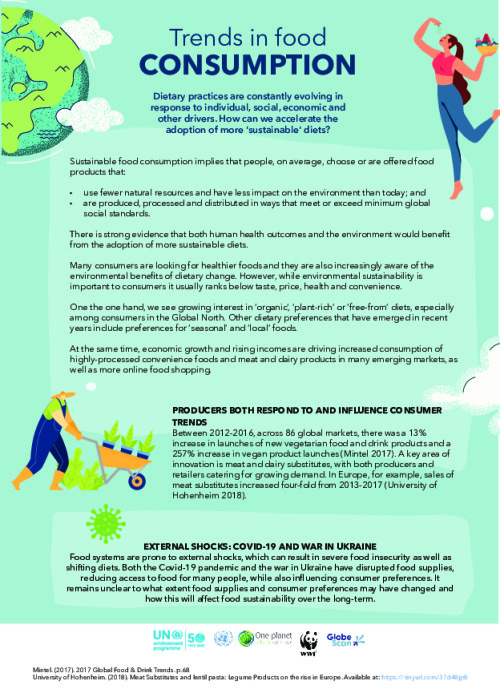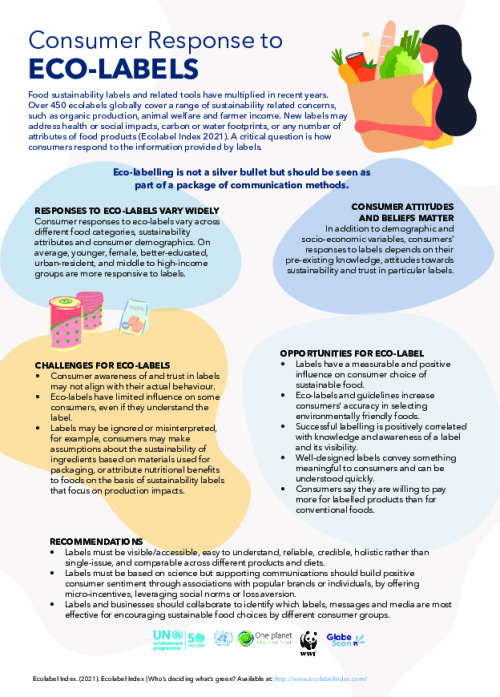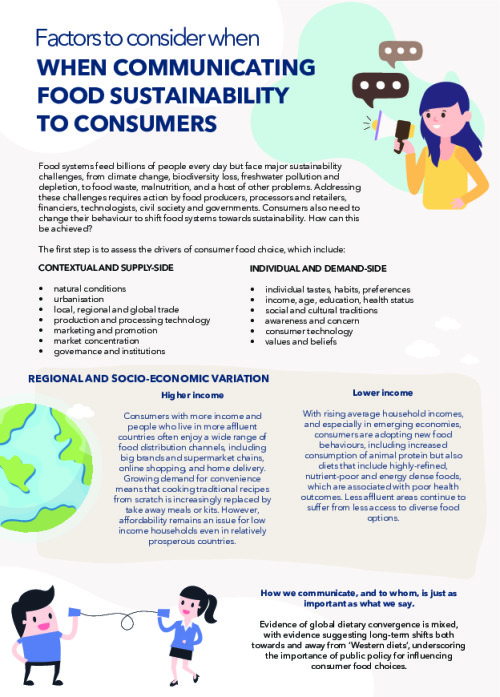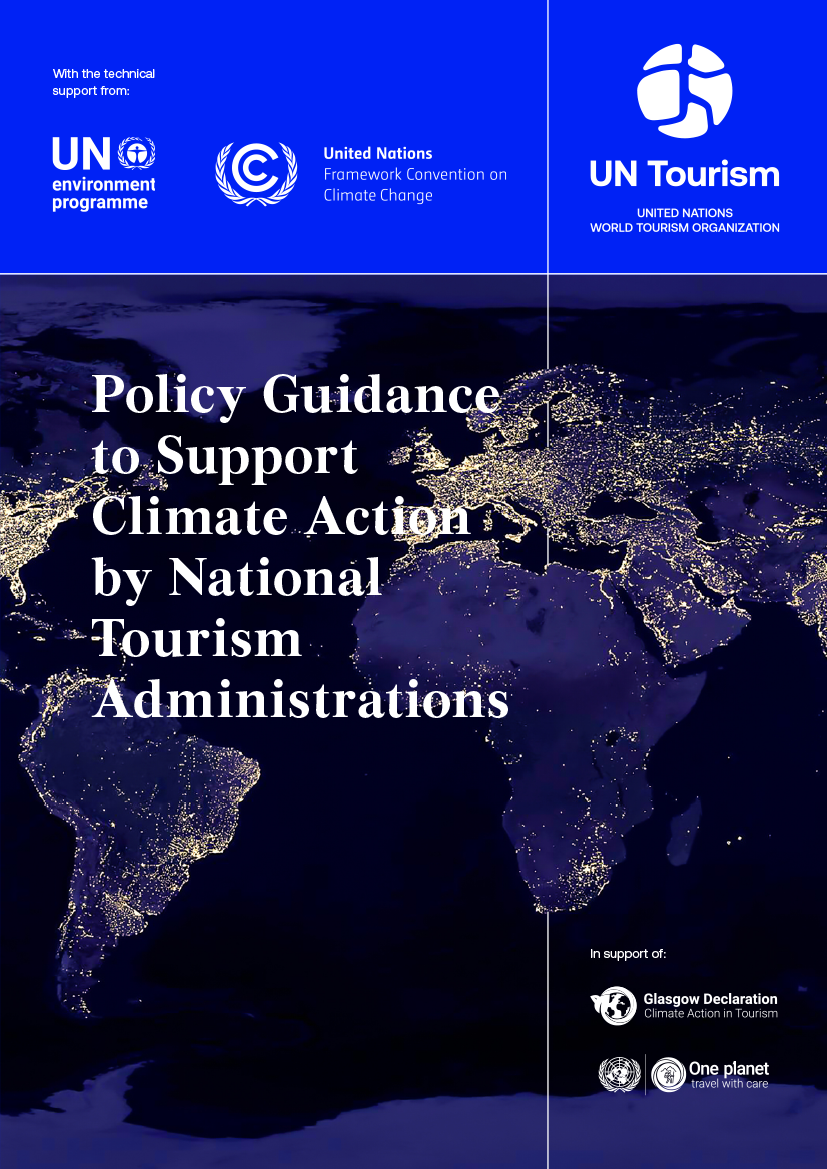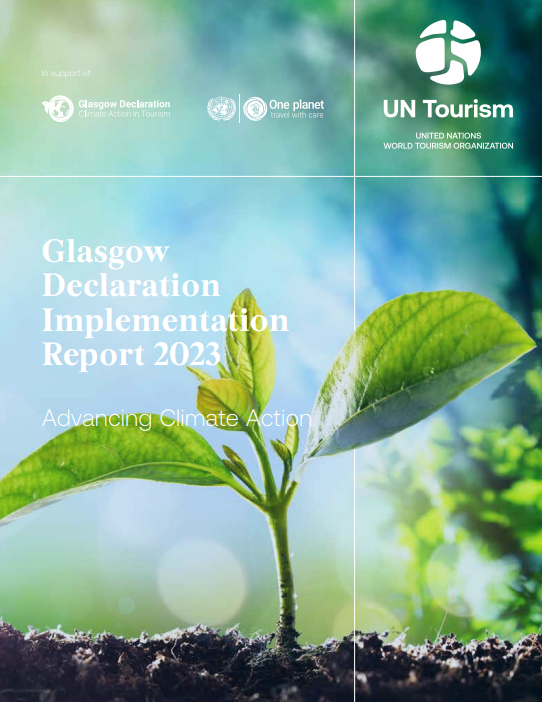Unilever: A Case Study on Communicating Food Sustainability Information to Consumers

UNEP, WWF and GlobeScan have developed a series of twelve case studies presenting efforts by companies and labels to communicate food sustainability to consumers. Read on to find out more about Unilever, the second case study in the series.
About Unilever
Unilever is a global consumer goods company with over 400 brands across beauty and personal care, food and refreshment and home care. Unilever products are sold in over 190 countries around the world and the company turned over EUR 51 billion in 2020, 58% of which came from emerging markets. The company’s purpose is to make sustainable living commonplace.
Unilever’s objectives
As part of Unilever’s Compass Strategy, the company aims to “win with our brands as a force for good, powered by purpose and innovation”. There are many goals that sit underneath this aspiration, as the company strives to create positive environmental, nutritional and social impact.
Within the Unilever goal to improve the health of the planet, there are three pillars: 1. Climate action, 2. Protect and regenerate nature and 3. Waste-free world. When it comes to climate action, Unilever’s Climate Transition Action Plan (CTAP) (ref) sets out the steps the company will take to reduce emissions to zero within its own operations by 2030 and to net zero across its value chain by 2039.
These targets are supported by every part of the business. For example, the Foods and Refreshment Division communicated its Future Foods plan in 2020, which includes committing to an annual €1 billion sales target from plant-based meat and dairy alternatives within five to seven years.
Unilever believes that transparency about sustainability impacts will help inform consumer choices and accelerate progress against some big societal goals, such as the global race to net zero emissions. Practically, this means giving consumers the information they need to make more sustainable choices. Unilever notes there is often a gap between the importance people say they place on sustainability issues and their actions. The company aims to support people to bridge this attitudes-action gap by being transparent about its corporate goals as well as brand values and purpose. This will enable consumers to identify the brands whose values align with their own and engage in brand-driven behavioural change programmes.
In addition, Unilever recognises that product-level information may also be needed to help consumers make informed purchasing choices and potentially encourage positive behavioural change towards sustainable living. As part of the Unilever Compass, the company has an ambitious goal to halve the greenhouse gas impact of products across the lifecycle by 2030, which will require significant consumer behaviour change. An additional aim is to share the carbon footprint of every Unilever product, although this goal does not currently have a publicly stated timeframe.
To learn more about Unilever’s approach to communicate food sustainability information to consumers and learn about the challenges and successes, download the full case study here.
Project background
Under the umbrella of the One Planet network Consumer Information Programme, UNEP, WWF and GlobeScan developed a research project to improve our understanding of how the provision of sustainability information can influence consumers’ food choices. This case study is one of twelve case studies showcasing approaches by companies and labels to communicate food sustainability information to consumers. Stay tuned for more articles in the series published every Tuesday and Friday over the coming weeks.
